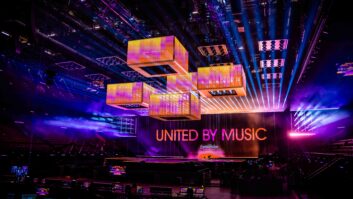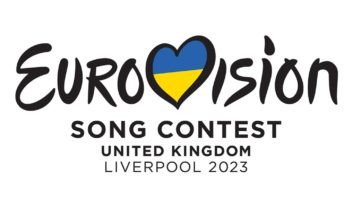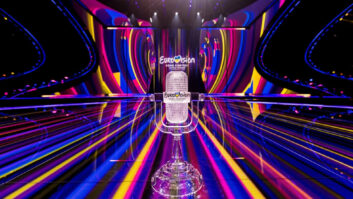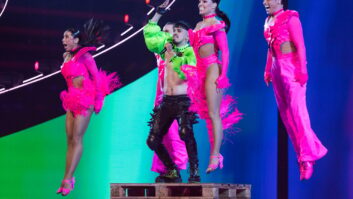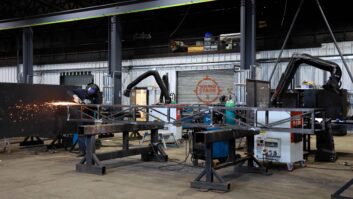As fans prepare to tune into three live Eurovision shows from Malmö, Sweden this week, the look of the show will have more of a cinematic feel than in previous years.
The first semi-final of Eurovision Song Contest 2024 takes place tonight, followed by the second on Thursday, and the grand final on Saturday.
Following Loreen’s triumph in Liverpool last May, this year’s broadcast is being produced by Sweden’s SVT.

The full on-site production team will be around 1.500 people, with 250 of those working on the broadcast, across stage, camera, lighting, video, sound crew. Tobias Aberg, executive in charge of production for Eurovision 2024, tells TVBEurope.
In terms of cameras, the production will employ a total of 26, including seven RF cameras, three handheld and four Steadycam. “After some intense review of the format we decided to stick to 1080i50 format, but we took a creative decision to run the cameras in a PSF mode to get a more ‘filmic look,'” Aberg reveals.
Aberg is reluctant to give away too many secrets about this year’s event, one of which is the location of the Green Room. “We will do interviews etc from the Green Room as usual but it won’t be until the end when we will reveal where it is. Regarding the amazing ESC audience, we will try to capture them in many different ways and of course focus on the standing fans.”

The SVT team will be pre-programming all of their camera shots and then using LiveEdit, an automated camera scripting system, to automatically change shots within the vision mixer. “This helps us to be frame accurate and also keep the contingency throughout all rehearsals,” explains Aberg. “It helps all the cameramen/women to keep track of their shots and they can do individual notes for each shot themselves.
“We use it for keeping track of comments and changes across all of the different departments, it could be lighting notes from the lighting director to his operator, a comment about a camera angle change, or a comment from the stage director about an artist moving differently.”
In terms of sound, SVT will be employing two batches of handhelds and individual belt packs, meaning 12 handhelds and 18 belt packs for the head mics, as well as the interval acts and the hosts. “On top of this, we’ll have 30+ audience mics and mics on all RF cameras,” he adds. There will also be 31 commentary cabins within the arena.
The show will be mixed in the two outside broadcast vans that SVT intends to use for production. “We will have a multitrack with 48 channels played out from the backtrack and mixed separately for each purpose, broadcast sound, FOH and in-ear monitoring.”
All broadcast graphics, including the voting graphics, will be powered by an open-source, real-time broadcast graphics system. This system handles the creation and management of all graphical templates and voting boards using HTML, JavaScript, and CSS.
“The system’s architecture includes various clients, specifically a voting client and standard rundown clients, developed in Javascript. These are implemented as traditional web services,” explains Aberg.
“The voting system is configured with six graphics channels. Four of these channels are equipped for fill and key outputs tailored for the programme feed, while the remaining two channels provide fill-only outputs—one for the presenter and another for the control room. Additionally, the standard rundown system utilises three channels, each supporting both fill and key capabilities.”
Augmented reality won’t be part of this year’s show, but the production will use overlays at certain points.
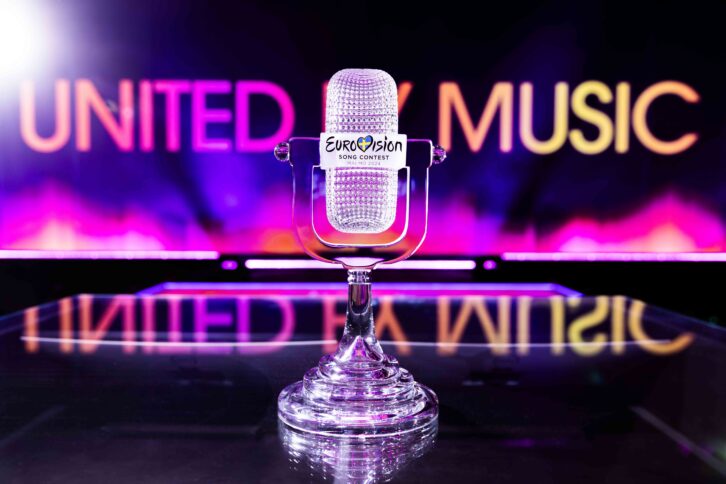
One of the things Aberg is particularly proud of is the green footprint of this year’s show. All crew and staff are staying in the nearby hotels, while production runners are using electric cars.
“The stage is using only LED and laser source lighting fixtures. We have tried to manufacture as little as possible and put our effort into rental products that can be used multiple times, and we are running our safe power on HVO100.”
SVT has also been sustainable in the way this year’s postcards have been filmed. Instead of sending a crew to the artists’ home countries, or flying them into Sweden, SVT has asked them to film themselves as if they were shooting a video for social media. “We’ve some ESC memories from the specific country and then there’s a ‘glam’ shot here on site with each artist. The glam shot is done by a slo-mo camera 500pict/sec on a rail to get the feeling that we want.”
As always, there’ll be plenty of redundancies in place should anything happen with the live broadcast, including three in-sync backtrack layouts, two equal OB vans, and multiple different ways the signal is being distributed to the various broadcasters. SVT is using a redundant system through the EBU network to deliver audio and video feeds.
Aberg admits producing the Eurovision Song Contest broadcast is no mean feat, and this year it’ll be even tougher with an in-the-round set design. “We loved the set when we saw it, even if it does offer lots of challenges.
“Now when we see it coming to life we do not regret our choice, but it has been a bit of bumpy road to this day. We are proud of our final product and hope the audience will enjoy it back home on the sofa.”
